Raising Chickens

Raising chickens does not take a great deal of maintenance. Providing a shelter, food and room to range is about all that they need. One of our original reasons we have chickens is to manage the bug population here on our property. Since Bella Terra was in a deteriorated and overgrown state for many decades, the bugs moved in and stayed. Chickens and guinea hens do a natural job of pest control. To see read more about our home restoration process, click here.
Hen House Design
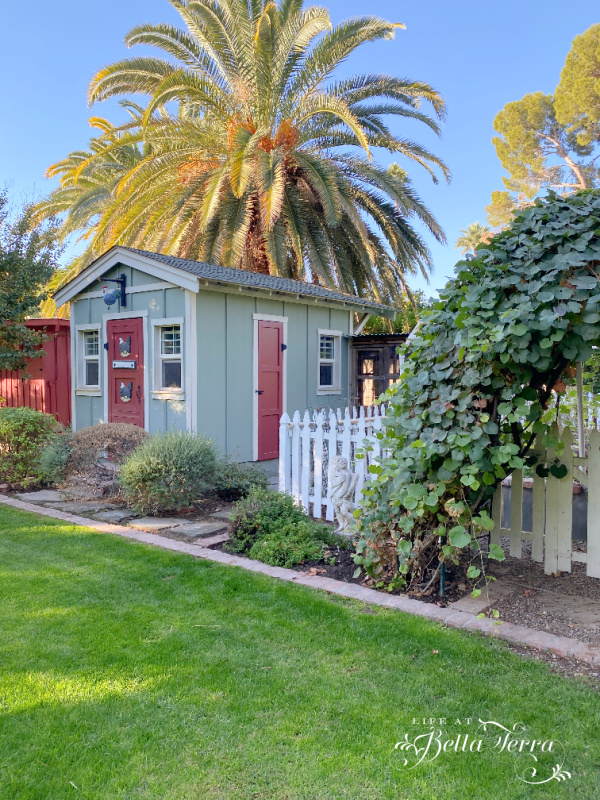
Initially our chickens and guinea hens would freely ambled around the yard. And then we got a dog…who liked licking the chickens in places I don’t want to mention. And he would chase the chickens, surely thinking they were his new toys. Coupled with birds of prey and coyotes, it was evident that we needed to secure our birds. So I designed our hen house, which sits between the garden and barn.
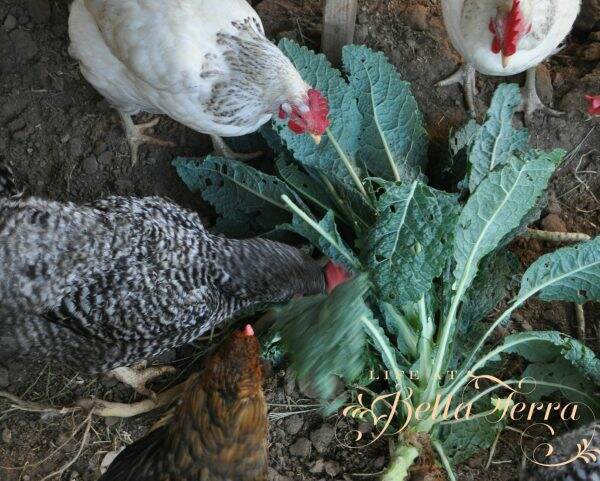
The interior of the hen house is a mirror image of itself. This symmetrical layout is to have the ability to utilize both sides independently-for an injured chicken, or baby chicks. There is definitely a pecking order, so it’s difficult to safely put chickens of different sizes and ages together.

Each side of the hen house has access to the nesting boxes where we gather eggs daily. The blue rolling tubs contain the chicken scratch and feed.
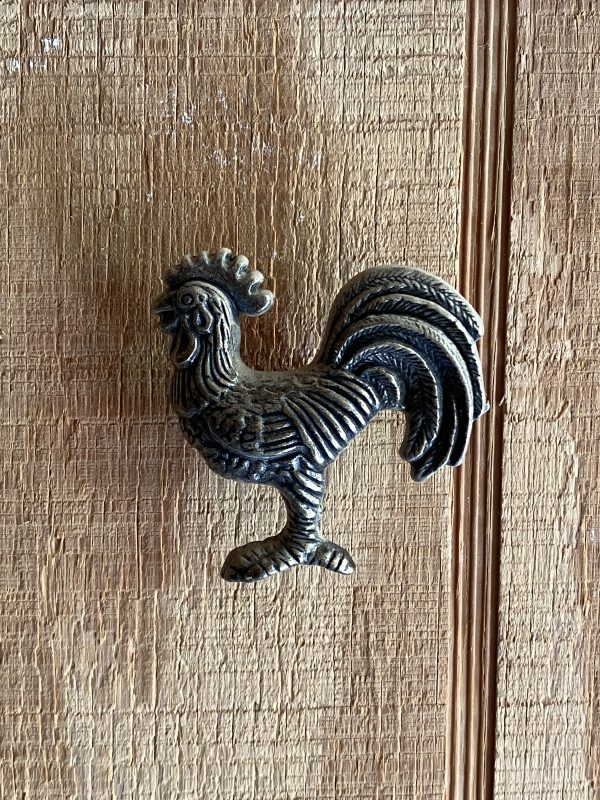
Fun themed handles add a bit of whimsy to the building.

At dusk, the chickens march their way inside the hen house, where they roost for the night. If we sense any predators finding their way into the screened-in area, we can secure the door for additional protection. Currently the 9′ x 12′ hen house can easily accommodate 25 – 30 chickens.

Outside Run
There is an outside run in the back so the chickens can free range safely. Here is where the food and water is located. The ground is dirt which allows the chickens to bury themselves during the heat of the day. Also these dust baths are a natural way the chickens get rid of any body bugs.
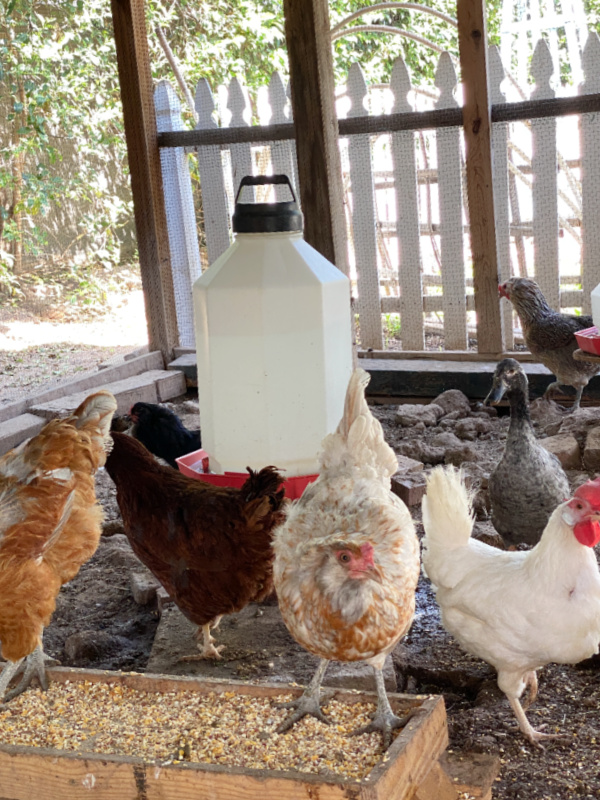
Today, we have 14 chickens (and one duck) and a variety of breeds-brown, white and blue/green egg layers.
Treats
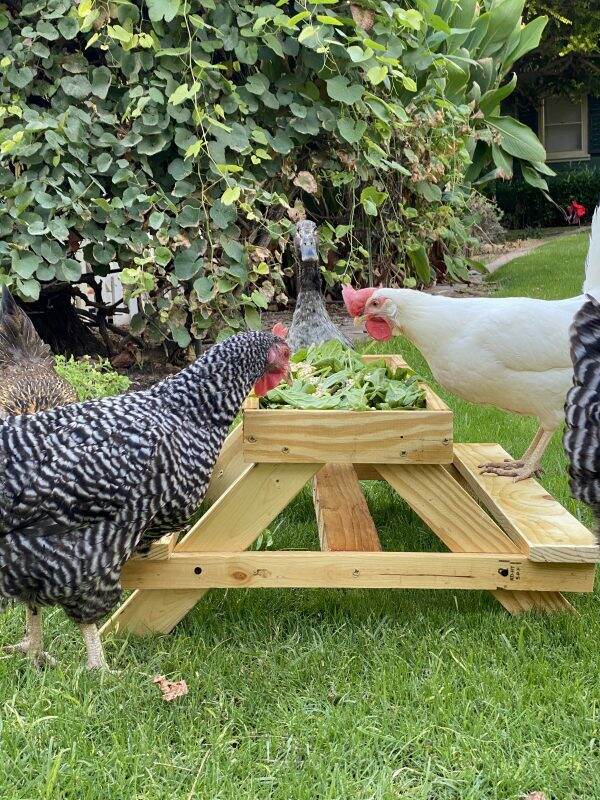
Since our sweet chickens provide us with the best tasting, fresh eggs, we, in turn give them treats and high quality food.
Being located right next to my vegetable garden, often the chickens get Swiss chard and other greens. During the hot summer months, frozen corn, peas, squash and chilled watermelon are favorite snacks.
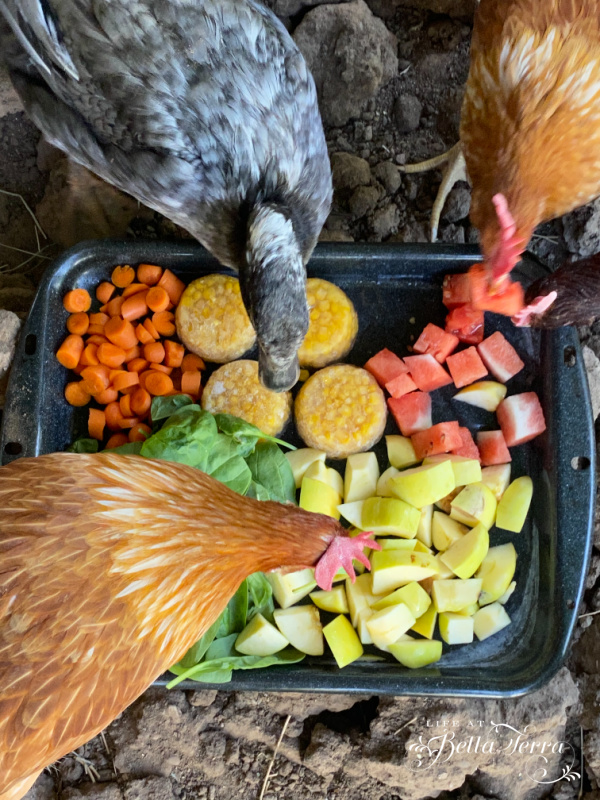
We also feed them black soldier fly larvae by Grubblies. These treats provide protein and calcium and the chickens LOVE them! And they are made in the USA and can be found here.

Bedding
I am experimenting with a mixture of dried flowers and herbs to add to the nesting boxes. Inspired by Lisa from Fresh Eggs Daily, this mixture is instrumental in keeping the hen house bug free. And who wouldn’t love laying eggs on rose petals?

To line the bedding boxes and flooring, we alternate between straw, hay and alfalfa. The straw is changed out weekly or as needed.
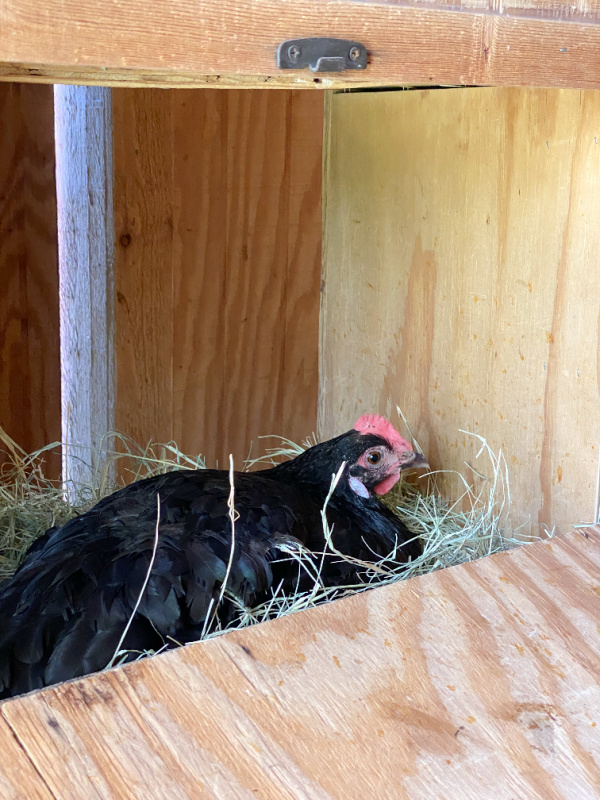
And by the way, we only have our chickens for the eggs, not meat.
Egg Laying
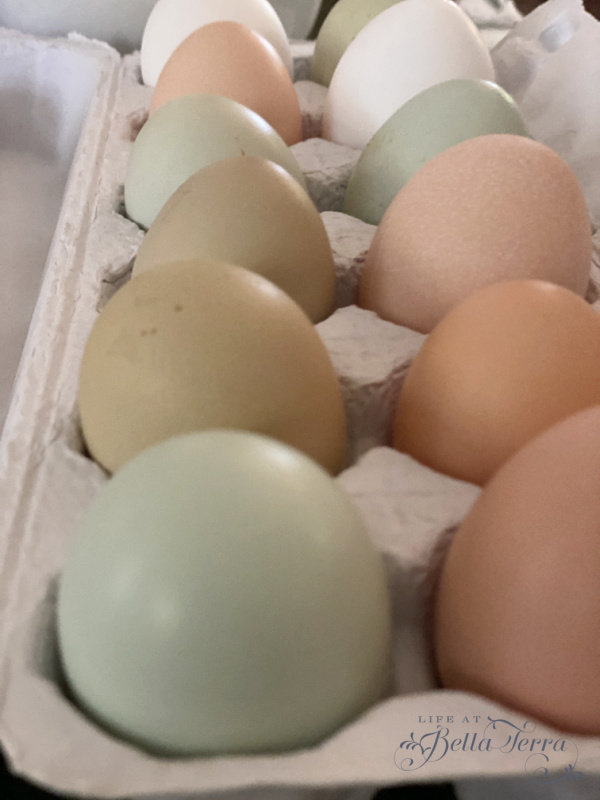
During the year, the chickens lay the most eggs in the Spring and Fall. The hot summers slow down the process. In the winter, a hen needs 14 hours of daylight in order to lay an egg daily. We do have a light to illuminate the hen house during the winter months.

Do all chickens lay eggs? The answer is no. Only hens (females) lay eggs and they do not need a rooster (male) to do so. When a rooster is introduced into the flock, then you can get baby chicks from a fertilized egg laid by the hen. Certain types of chickens lay more or less eggs than others.
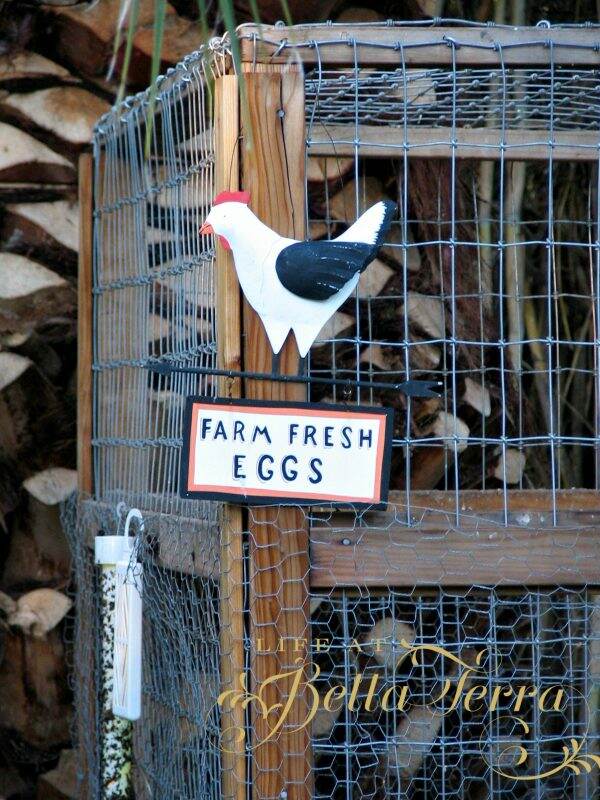
If you are considering raising your own chickens, check with your local government to make sure you are allowed to do so. Here in Phoenix, you can have hens, but no roosters are allowed within the City limits.
Baby chicks can be sourced locally or online. Our latest batch of chicks are from McMurray Hatchery. Through this website you can choose different attributes like the type of chicken, egg color, and age. Seems a bit strange to get a box of live baby chickens in the mail, but that is how it is done.

I cannot say enough about fresh eggs. They taste better. Unlike the eggs you buy commercially, we retain the protective coating on the outside of the eggs and wash them prior to use. Ours are always fresh and delicious.
To read more about chickens, here is a post of frequently asked questions.
Happy Wednesday, my sweet friends! Tomorrow my son arrives home and I cannot wait. There is something about having the family together that just feels right.


Just a reminder that any words that are italicized bring you to the source. If it is a product on Amazon, please note that I am an Amazon Affiliate. If you purchase something through my website, I receive a small (very small!) stipend, which doesn’t affect the price you pay at all. My goal is to make sourcing the items easy for you. Thank you for your continued support.

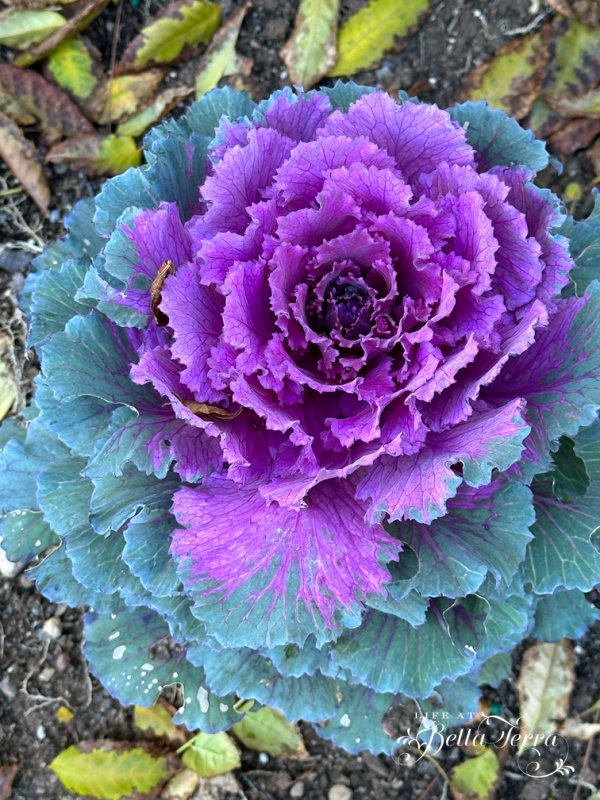
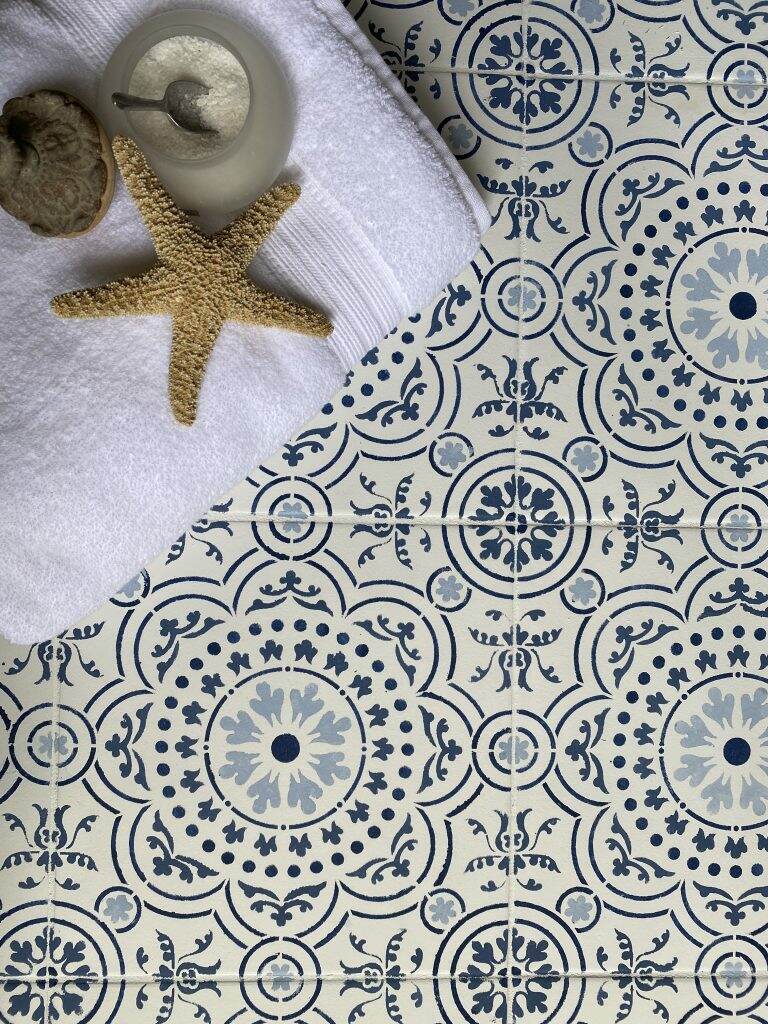



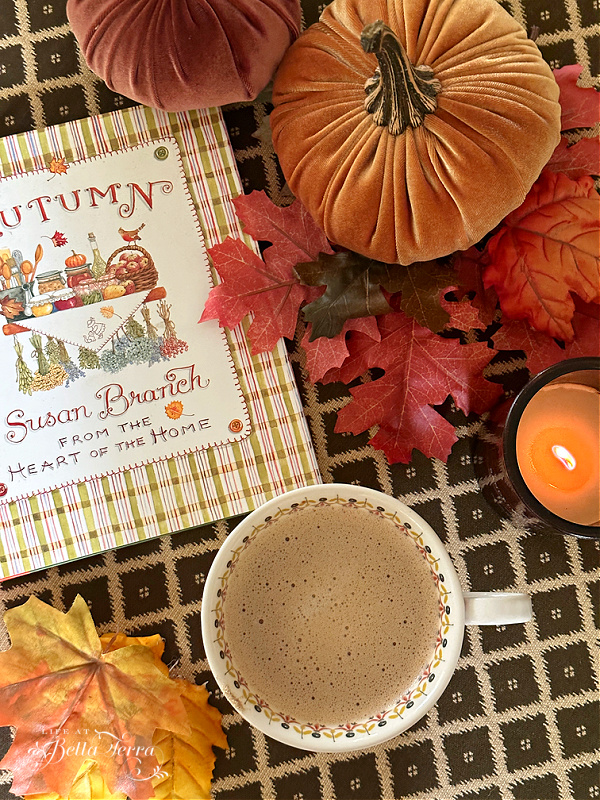
I love your chickens, they were so awesome to see in person. I think they live at the Chicken 4 Seasons 🙂 Thanks so much for sharing
The Hen House at Bella Terra is beautiful! I thought about getting chickens because I too want to know how the fresh eggs tasted…I even tried to YouTube how to humanely kill a chicken for food… I decided that I couldn’t do that….but I still would like to raise chickens for their eggs. I thought Hens stop producing eggs after a few years? What do you do with them when they stop producing? Do you eat them? I have no problem with it..I just couldn’t bring myself to do it!
Thanks so much for sharing!!
Yes, it is true that chickens reduce their output after a few years. Some chicken breeds are better layers than others. Unfortunately, our older chickens are free-loaders, eating our feed but not giving much back 🙂 But we do let them free-range occasionally and they get rid of bugs. I just let nature take its course on their lifespan. I don’t know if you’ve read the book by Barbara Kingsolver, Animal, Vegetable, Miracle but it’s a great story on raising food for your family. She is a delightful writer and I know you would love it!